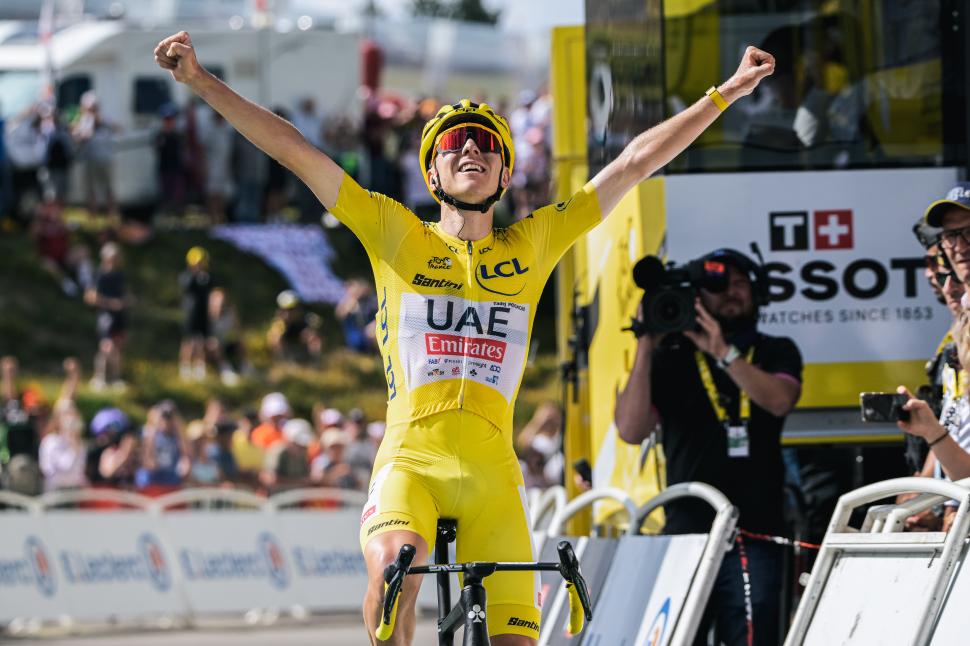Professional cycling, especially in the 2020s, has increasingly become a numbers game. In an era of sports scientists and power meters, data is king: absolute power, watts per kilo, aerodynamic CdA, durability measured in kilojoules, heart rate, and recovery metrics are all pored over by scouts and coaches armed with software and algorithms, as they crunch the numbers in search of the next superstar.
But, when it comes to assessing the natural ability and potential of endurance athletes, one measurement still stands above the rest: VO2 max.
Also known as maximal oxygen uptake, VO2 max refers to the volume of oxygen, in litres per minute, transported by an athlete during exercise. The ‘normal’ VO2 max for a man in his 20s falls between 38 and 43ml/kg/min. Professional male cyclists, meanwhile, tend to range between the mid-70s to the high-80s.
Lance Armstrong’s VO2 max was reported to be 85, while five-time Tour de France winner Miguel Induráin’s was said to be 88, around the same as four-time Tour champion Chris Froome.
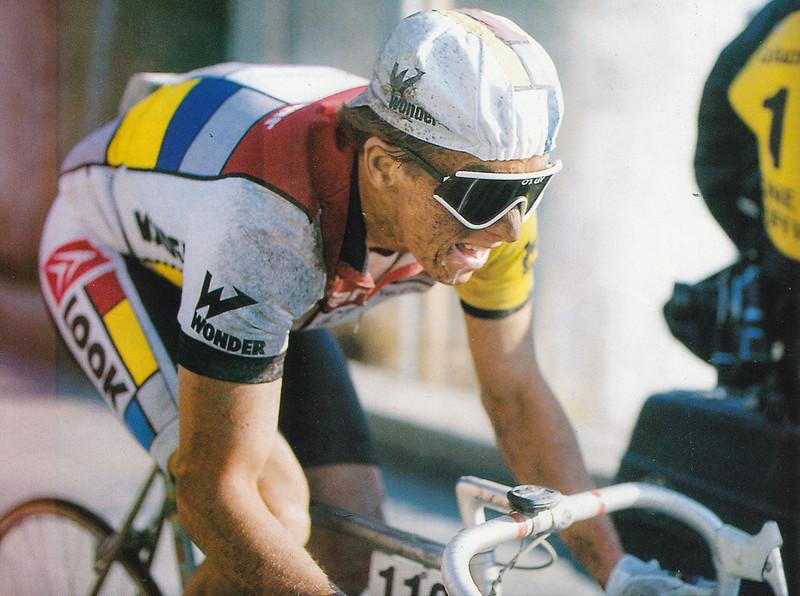 Greg LeMond (credit: Creative Commons)
Greg LeMond (credit: Creative Commons)
Greg LeMond, however, is widely believed to have recorded the highest VO2 max for a cyclist, the American submitting a score of 92.5 during a session early in his career in Colorado Springs, a result so staggering the tester is reported to have exclaimed upon seeing the numbers, ‘Jesus, guys, look at this!’
But LeMond’s 40-year-old reign as cycling’s VO2 king now appears to be under threat, thanks to – you guessed it – Tadej Pogačar.
According to a new study published by Norwegian researcher Ole Kristian Berg, the world champion’s VO2 max could be as high as 96 ml/kg/min.
To put that into perspective, for many years, 96 was the highest VO2 ever recorded, courtesy of Norwegian cross-country skiers Espen Harald Bjerke and Bjørn Dæhlie, the latter viewed as the greatest male skier ever.
That benchmark was broken in 2012, when that year’s world junior time trial champion Oskar Svendsen, at the age of 18, posted a result of 97.5. Despite finishing fifth at the Tour de l’Avenir the following season, the Norwegian would never turn pro, quitting the sport in 2014 citing burnout.
 Tadej Pogačar wins stage 15 of the 2024 Tour de France on Plateau de Beille (credit: ASO/Charly Lopez)
Tadej Pogačar wins stage 15 of the 2024 Tour de France on Plateau de Beille (credit: ASO/Charly Lopez)
In an article titled ‘Tour de Physiology: The Exceptional Power Outputs and V̇O2 of climbing in the Tour de France’, published in the Journal of Science and Cycling earlier this month, Berg argued that Pogačar’s dominant displays at the 2024 and 2025 editions of the Tour de France had seen him “pushing the limits of human physiological performance”.
While Berg’s assessment of the Slovenian’s maximal oxygen uptake did not take place in a lab, the researcher based his findings on Pogačar’s climbing performances and power output on six mountain stages across the last two Tours: Plateau de Beille, Isola 2000, and the Col de la Couillole in 2024, and Hautacam, Peyragudes, and Mont Ventoux at this year’s race.
To work out Pogačar’s power output, and thus translate it to VO2, Berg, a researcher in the Faculty of Health Sciences and Social Care at Molde University College, collected the relevant time and elevation data from the four-time Tour winner’s Strava, as well as the Slovenian’s publicly available weight and height, and the estimated weight of his Colnago machine.
 Table detailing Pogačar’s power output and VO2 max during 2024 and 2025 Tours de France (credit: Ole Kristian Berg)
Table detailing Pogačar’s power output and VO2 max during 2024 and 2025 Tours de France (credit: Ole Kristian Berg)
He then used these to work out estimates for the world champion’s critical power (the highest power a rider can sustain for 40 minutes) and validated those findings by comparing them to fellow Tour rider Derek Gee, who reported his power meter data on Strava.
Across the six climbs covered in the study, Pogačar consistently climbed at 6.4 to 7 watts per kilo, averaging between 421 and 462 watts.
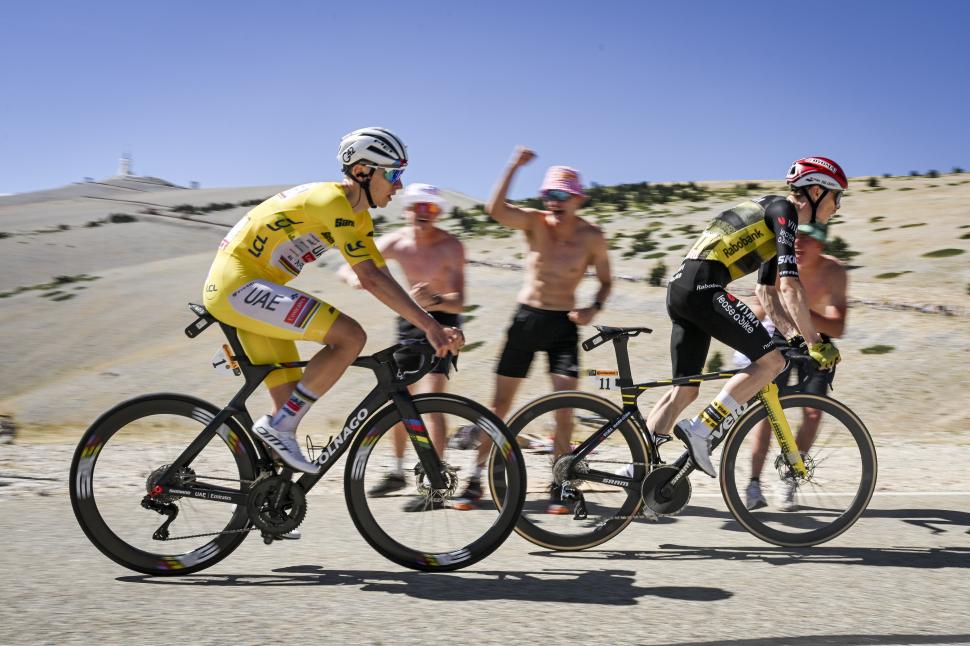 Tadej Pogačar and Jonas Vingegaard, Mont Ventoux, stage 16, 2025 Tour de France (credit: ASO/Billy Ceusters)
Tadej Pogačar and Jonas Vingegaard, Mont Ventoux, stage 16, 2025 Tour de France (credit: ASO/Billy Ceusters)
His highest numbers came on this year’s stage to Peyragudes, a short mountain time trial, while his lowest figures were recorded on Mont Ventoux a few days later, where he still broke Iban Mayo’s 21-year-old record on the Giant of Provence.
That Ventoux performance was achieved despite the yellow jersey being engaged in a tactical battle behind the breakaway with Jonas Vingegaard, riding into a headwind, and where it is likely his reported knee pain, which hindered his final week at the 2025 Tour, first began to flare up.
Perhaps Pogačar’s most impressive single performance at the last two Tours came at Plateau de Beille, where he put over a minute into Vingegaard and shattered Marco Pantani’s longstanding record on the Pyrenean climb, climbing at 6.9w/kg, having already covered almost 200km over four previous category one ascents.
Berg then calculated Pogačar’s VO2 max using the established assumption that critical power in elite cyclists likely occurs at 85 to 90 per cent of VO2 max.
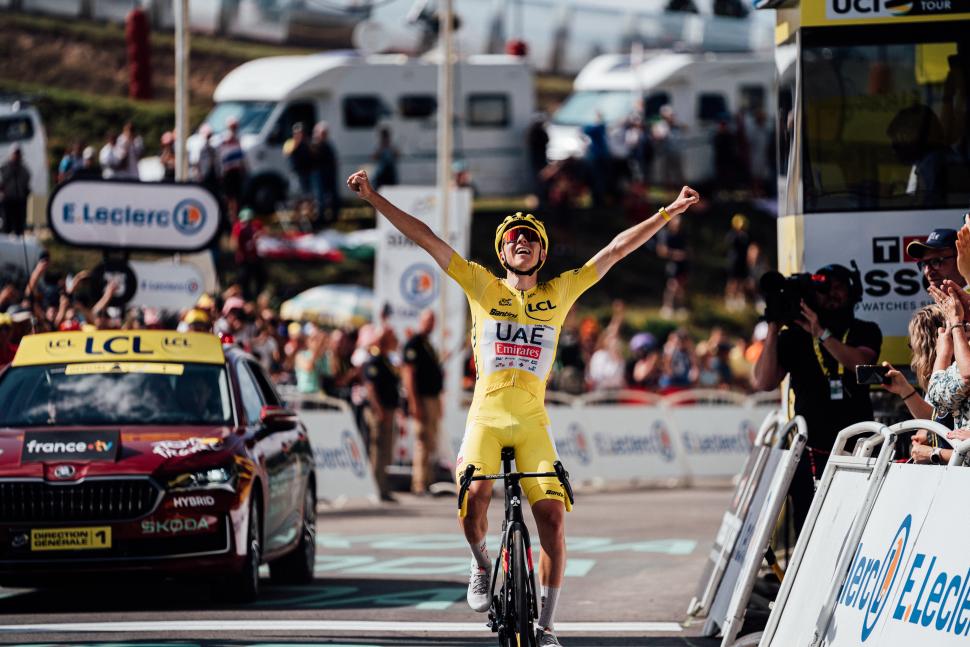 Tadej Pogačar wins stage 15, 2024 Tour de France (credit: Zac Williams/SWpix.com)
Tadej Pogačar wins stage 15, 2024 Tour de France (credit: Zac Williams/SWpix.com)
The researcher recorded that the “values obtained for Plateau de Beille in 2024 would indicate that the V̇O2 max during this race was in the range of around 91 –96ml/kg/min for this rider, likely in the higher end of the spectrum given that the preceding part of the stage and previous race days may have lowered his CP slightly compared to optimal conditions”.
Berg also noted that “previous endurance efforts may have slightly reduced the gross efficiency of the rider, making the effort more costly in V̇O2, which would indicate higher values of V̇O2 max”.
The researcher did point out, however, that factors such as wind direction and drafting were not taken into account in his analysis, all based on secondary data, though he notes these would have been less relevant on the steeper climbs, especially in the Peyragudes time trial, where naturally drafting was not an issue.
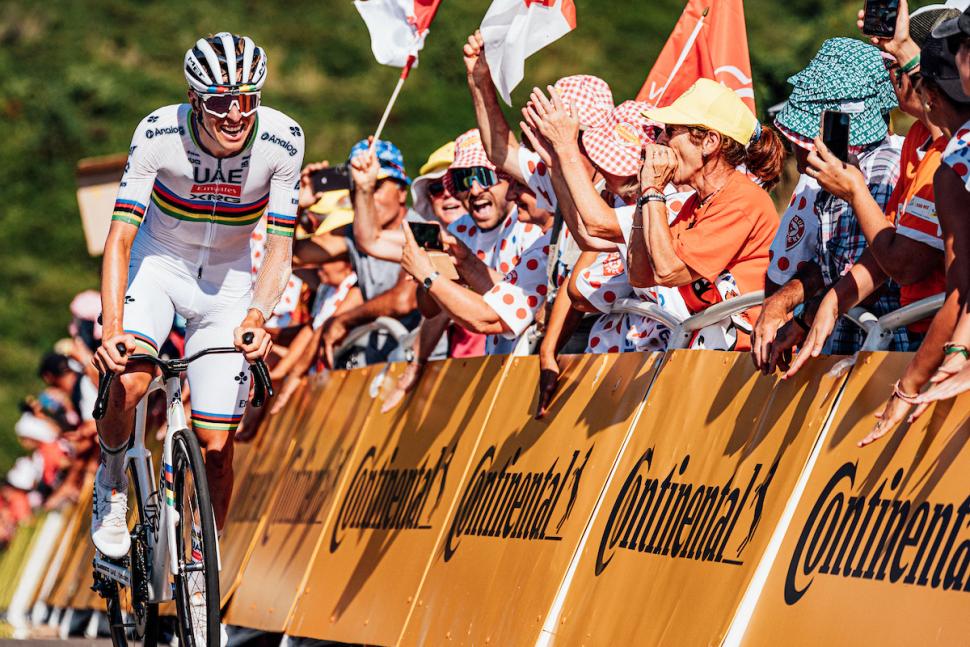 Tadej Pogačar, stage 12 of 2025 Tour de France (credit: Zac Williams/SWpix.com)
Tadej Pogačar, stage 12 of 2025 Tour de France (credit: Zac Williams/SWpix.com)
According to Berg, if tested under lab conditions, away from the fatigue and tactical racing of the Tour, it is highly likely that Pogačar would post a VO2 max in the high 90s.
Those results, Berg says, are indicative of the “extreme underlying physiology” that has propelled the Slovenian to his position as one of the sport’s all-time greats.
So, in short, Tadej Pogačar is a pretty good bike rider, maybe one of the best we’ve ever seen. Groundbreaking stuff, I know.
